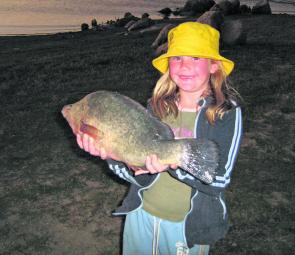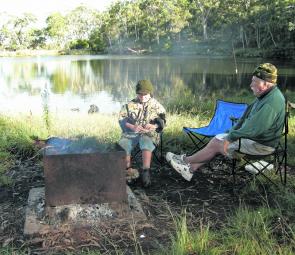Crisp conditions have well and truly arrived across the New England Tablelands. Although May and early June were a little kinder to early morning starts, the frosts have recently hardened up.
Over the next month we can expect the last of the still mornings before the traditional August westerly winds arrive.
With the trout and bass out of consideration due to closed seasons, fishos will be focusing on the cod and yellowbelly in the dams.
At this time of year there are two reasons for a lengthy breakfast before heading out onto the water.
Firstly, wait until it warms up a bit. Sitting around in a tinny waiting for the sun to crest the hills isn’t my idea of fun. Secondly, most fish activity will occur once the water warms and this will usually be adjacent to dominant structure.
To find the warmer water in impoundments look for a combination of several key elements.
A sheltered bay which receives early sun is a good start. Wind turns over water layers, mixing the colder deeper water and reducing average temperatures. A bay that receives sun early in the morning will heat up over a longer period.
On most impoundments across the region look for western shore bays with low headlands that do not shade them.
Structure such as submerged boulder gardens and drowned timber also encourages fish not just by providing cover. Structure reduces the effects of wave action and also holds heat more than open water does.
Structure and slightly warmer water also attract prey items such as baitfish and the larger predators will be close at hand.
Later in the day, seek out shallow bays at the heads of such inlets. During Winter fish cruise these areas even during daylight hours.
Depending on your target species, the key is to fish medium to large offerings at a slow retrieve.
Even though these areas of warmer water encourage fish activity, a fish’s metabolism is slower at this time of year. It will generally not chase lures any distance so give a fish the opportunity to slam it.
Areas of flats with obvious adjacent drop-offs and channels are key locations to target. At this time of year most of the weed beds will be gone so you’ll be fishing pretty open water.
A terrific lure option in these areas is a 3”-4” paddletail grub. Coupled to a spinner blade, either threaded straight onto the jig head or in conjunction with a wire spinner harness, these are real fish attractors.
Because Winter water tends to run clear I’d suggest you stick to muted or natural colours.
This style of angling doesn’t call for too much gear and a leisurely post-lunch walk of the bank can be just as productive as pounding the water all day. A boat will help you quickly access the more remote bays.
If you can get hold of some shrimp or yabbies, hang one under a bubble float in such areas. This is a terrific option for the kids on a sunny afternoon.
A still winter evening, although cold, is also another period to test a fresh bait or two.
If you can find a remnant weed bed, this is an excellent choice. Generally during the cold months most weed growth is limited to maximum water depths of about a metre.
Lake Keepit and Copeton Dam probably hold better Winter water and have more sheltered bays. Pindari tends to be largely deep water and goes off a little during the middle of the cooler months.
Chaffey and Split Rock are also worth a look but traditionally the first two impoundments are the ones to target over Winter.
For the hardy chasers of the big Winter cod it is a whole different ballgame. While I do not consider myself well-versed in targeting impoundment cod, those that do love this time of year.
Targeting big fish with big hardware gets the blood pumping and Copeton has a reputation for producing the goods each cold spell. Ultra slow trolling extra-large lures in 3m-4m depth contours is the preferred choice.
However a surprising number of big fish are also taken from the shoreline.
In the rivers a popular Winter target across the Tablelands is the redfin. One of my favourite deer-hunting properties straddles a tidy little creek full of these fish. Although they are seldom large they have given plenty of fun during the non-hunting hours.
Mind you, there are some solid fish about and even the smallest redfin gives a good account of itself.
Anything that will draw a trout’s attention will undo a hungry redfin. Light gear and a few Celtas or small minnow plugs are sufficient.
Look for areas of standing rushes or overhanging brush along the medium-sized holes. Once you find one fish you can bet you’ll find plenty more as they are a schooling species.
The rivers and creeks north of Uralla generally hold redfin. The likes of Saumarez and Aberfoyle creeks as well as the Gwydir and Deepwater rivers have long held numbers of redfin.
The Deepwater also has a terrific cod population, which possibly stems from plenty of rat-sized reddies as a food source. Remember that redfin are an introduced species and you are expected to kill any fish caught and not return them to the system.
August tends to provide unsettled weather across the Tablelands so hit the water now. Enjoy the sun and hopefully a fish or two!
Reads: 1198
Yellowbelly can still be taken from areas of shallow cover.

The ‘poor man’s trout’, rat redfin are a popular Winter distraction.

Shore angling is a terrific Winter option. Find a sheltered area and sit it out in the sun.




